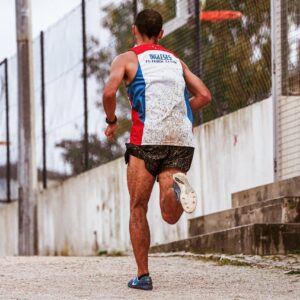Contents
- The Science of Muscle Growth
- How Bodyweight Training Stimulates Hypertrophy
- Muscle Groups You Can Effectively Train with Bodyweight
- Benefits of Bodyweight Training
- Limitations to Consider
- Sample Bodyweight Workout for Muscle Growth
- How to Incorporate Bodyweight Training Into Your Routine
- Conclusion
- References
Can you really build muscle without lifting weights? The answer is a confident yes—but with important caveats. Bodyweight training, also known as calisthenics, can promote hypertrophy (muscle growth) when programmed strategically. While it may lack the adjustable resistance of gym machines and free weights, bodyweight exercise can be surprisingly effective when progressive overload, volume, intensity, and mechanical tension are factored in.
This article explores the science behind muscle growth, how bodyweight training fits into that equation, and how to optimize your no-equipment workouts for serious results.
The Science of Muscle Growth
Muscle hypertrophy occurs when fibers are subjected to mechanical tension, muscle damage, and metabolic stress. These triggers activate satellite cells and anabolic signaling pathways like mTOR, ultimately leading to increased muscle protein synthesis (Schoenfeld, 2010).
While lifting weights is a popular way to generate these stimuli, research shows bodyweight movements can do the same when performed with adequate:
- Intensity (close to failure)
- Volume (sufficient sets and reps)
- Progressive overload (gradually increasing the challenge)
Evidence Spotlight: A 2017 study published in the Journal of Strength and Conditioning Research found no significant difference in hypertrophy when comparing push-up training with bench press training over 8 weeks—provided both were performed to failure (Calatayud et al., 2017).
How Bodyweight Training Stimulates Hypertrophy
1. Progressive Overload Without Weights
Muscles grow when they are challenged beyond their current capacity. Even without dumbbells or barbells, you can achieve progressive overload by:
- Increasing reps or sets
- Reducing rest time between sets
- Adding tempo (e.g., slow eccentrics)
- Using harder variations (e.g., from push-up to archer push-up to one-arm push-up)
2. Mechanical Tension and Time Under Tension (TUT)
Holding a position (like a wall sit or isometric lunge) increases TUT, placing your muscles under load for longer—an important signal for hypertrophy.
3. Metabolic Stress
High-rep sets and minimal rest periods can cause a “burn” due to lactic acid buildup. This metabolic stress encourages growth via cell swelling and hormonal responses.
Muscle Groups You Can Effectively Train with Bodyweight
- Chest: Push-ups, archer push-ups, decline push-ups
- Shoulder: Pike push-up, wall supported handstand push-up
- Back: Inverted rows (under tables), towel rows, wall pull-ups
- Legs: Bulgarian split squats, towel leg curl, single-leg glute bridges
- Core: Planks, hanging leg raises, hollow body holds
- Arms: Diamond push-ups, triceps dips, leg concentration curl
Coach’s Tip: Use a backpack filled with books or water bottles to add resistance during squats or push-ups for an easy progressive overload hack.
Benefits of Bodyweight Training
- No equipment needed—perfect for home or travel
- Improves joint stability and functional strength
- Scalable for beginners to advanced athletes
- Improves mobility, coordination, and balance
- Lower injury risk compared to heavy lifting
Limitations to Consider
- Difficult to isolate certain muscle groups (e.g., biceps)
- Harder to apply traditional overload at advanced levels
- Requires creativity and strong mind-muscle connection
- Progress tracking can be more subjective
Expert Insight:
“Bodyweight training is extremely viable for hypertrophy if programmed correctly,” says Dr. Brad Schoenfeld, a leading expert in strength training science. “You just need to apply the same principles that govern muscle growth—effort, progression, and consistency.”
Sample Bodyweight Workout for Muscle Growth
| Exercise | Sets | Reps | Rest |
|---|---|---|---|
| Bulgarian Split Squats | 4 | 8–12/leg | 60 sec |
| Push-Ups (Feet Elevated or Archer) | 4 | 10–15 | 60 sec |
| Inverted Rows (Under Table) | 3 | 10–15 | 60 sec |
| Wall Sit (Isometric Hold) | 3 | 30–45 sec | 45 sec |
| Hollow Body Hold | 3 | 30 sec | 30 sec |
Frequency: 3–4 times per week
Progression: Add reps, sets, or intensity weekly
How to Incorporate Bodyweight Training Into Your Routine
Beginner
- Start with basic movement patterns: push, pull, squat, hinge, core
- Focus on form, gradually increasing reps to build endurance and control
Hypertrophy (Muscle Growth)
- Train in the 8–15 rep range, close to failure
- Use advanced variations or external resistance like weighted vests or backpacks
Functional Fitness
- Combine strength, balance, and mobility exercises (e.g., animal flow, crawling patterns)
- Train full-body circuits or EMOM-style for efficiency
General Fitness
- Mix upper/lower body moves, planks, and cardio bursts (e.g., jump squats)
- 3x/week full-body workouts for maintenance
Mobility or Recovery
- Use slower tempo, isometrics, and bodyweight yoga-inspired flows
- Great for off-days or active recovery
Conclusion
So—can you build muscle with bodyweight training? Absolutely.
With intelligent programming and a willingness to challenge yourself, you can grow stronger, more muscular, and more functional—all without a single dumbbell. Whether you’re training at home, outdoors, or on the road, bodyweight workouts can offer not just a substitute, but a legitimate path to muscle-building success.
References
- Calatayud, J., Borreani, S., Colado, J. C., Martin, F., Rogers, M. E., & Andersen, L. L. (2017). Bench press and push-up at comparable levels of muscle activity results in similar strength gains. Journal of Strength and Conditioning Research, 31(1), 123–129.
- Schoenfeld, B. J. (2010). The mechanisms of muscle hypertrophy and their application to resistance training. Journal of Strength and Conditioning Research, 24(10), 2857–2872.



